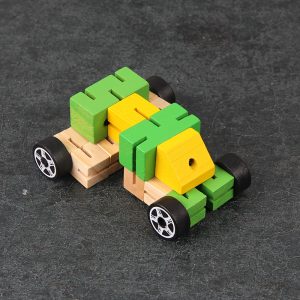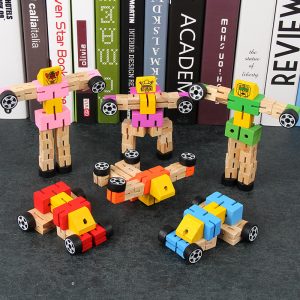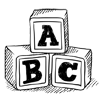Common problems in wood product construction
One, the pattern of wooden wall skirts, door and window cones is not coordinated
(1) Phenomenon The pattern of wooden wall skirts, door and window bobbin boards is not coordinated, and the color is uneven. (2) Reason
1. The materials were not carefully selected before construction, and the wood grain and color of the boards were not pre-arranged. 2. The putty is not well blended, and the seams, eyes, and colors are unqualified. 3. The paint quality is not high and the painting is uneven.
(3) Measures
1. Carefully select materials before construction, and pre-arrange according to the wood grain and color of the board.
2. Prepare the putty, make up the seams, fill the eyes and fill the color as required.
3. Purchase qualified paint and apply the paint according to the process requirements.
2. The surface of wooden wall skirts, door and window bobbin boards is not flat
(1) Phenomenon The surface of the wooden wall skirt, door and window micro-board is not flat, and local unevenness can be seen under the irradiation of light.
(2) Reason
1. The spacing between wood keels is too large.
2. The materials were not carefully selected before construction, and the wood grain, color, and color were inconsistent, causing poor vision.
(3) Measures
1. The spacing of wooden keels generally does not exceed 450 mm. It can be adjusted appropriately according to the thickness of the panel. Thin plates are used, and the spacing between wood keels is smaller, and thick plates are used to increase the spacing between wood keels. 2. Carefully select materials before construction, and pre-arrange according to the wood grain and color of the board.
3. Do damp-proof treatment on damp walls. An air hole can be drilled every 1 meter at the connection with the skirting line.
3. The color of the veneer is uneven, the wood grain is not coordinated, and the glue is partially opened.
(1) Phenomenon fire-resistant glue and thin wood veneer panels appear uniform in color, uncoordinated wood grain, and partially glued.
(2) Reason
1. The material is uneven or the tree species are mixed, and the wood grain is not easy to be coordinated and consistent.
2. The paint quality is poor, the bottom plate is damp, and the tree species are mixed, which is prone to uneven color. 3. The sticking surface is not clean before brushing the glue, the glue is uneven, and the glue leaks. The air is not exhausted when the sticking is applied, and it is easy to cause partial glue opening and warping when pressed.
(3) Measures
1. Before construction, select tree species and materials to be as uniform as possible. The roots are down and the tops are up to make the wood grain smooth and natural.
2. Prevent moisture during construction.
3. Before brushing the glue, clean the surface of the glue, apply the glue evenly, and do not miss the brush.
4. When pasting, press to one side to remove the air. Fourth, the position of the wooden curtain box and the hanging mirror line is not accurate, and the shape is deformed.
(1) Phenomenon
1. The curtain box and the mirror line are deformed and bent, and the seams are not tight.
2. The position of the curtain box is deviated.
(2) Reason
1. The wood has a high moisture content and shrinks or deforms after installation.
2. The horizontal reference line was not found before installation.
(3) Measures
1. The wood used in the wooden curtain box and hanging mirror line should be soft wood that is not easy to crack and deform, and the moisture content of the wood must be less than 12%.
2. The installation of the curtain box should locate the horizontal line. For a long curtain box, pull through the line as the bottom of the mouth, and fix the two ends of the curtain box on the end plate and be perpendicular to the wall. The installation of multiple curtain boxes in the room should be leveled according to the same elevation and kept horizontally, and the length of the two out of the window should be the same.
3. The thickness of the top cover of the curtain box is generally not less than 15 mm, and the curtain rail is easily installed. 4. The mirror-hanging wire must have the same specifications and a smooth surface when it is processed and formed.
5. The intersection of the makeup head of the mirror line and the yin and yang angles should be a 45-degree cut angle, and the wall at the intersection of the yin and yang angles should be buried with wooden bricks or dowels. Use nails to nail the mirror line firmly and not exposed. , The nail distance of the mirror line should be less than 500 mm to ensure its straightness. 5. The window sill is warped, and the height is deviation
(1) Phenomenon
1. The window sill picks out the wall size is inconsistent, and the length of the window frame at both ends is inconsistent. 2. The height deviation at both ends of the window sill.
3. The window sill is warped.
(2) Reason
1. The plastering thickness of the window frame is inconsistent. The window sill was not leveled when installing it.
2. When installing the window sill board, it is not evenly divided according to the center line, resulting in inconsistent extension at both ends.
3. The installed window frame has a deviation from the installation of the wall, and the width of the two ends from the wall is different. 4. The wood used in the window sill has a high water content.
(3) Measures
1. The window sill should be made of dry wood with a thickness of not less than 20 mm. When window sills with a width greater than 150 mm are assembled, a dark belt should be worn to prevent warping.
2. The window frame must be installed in an accurate position, with the same size from the wall and the same plaster on both sides. 3. The window sill shall be installed level with a level ruler, and no flooding shall be allowed. The height difference between the two ends should be less than 2 mm.
4. In the same room, window sills should be installed at the same elevation and kept level. The length of the window opening at both ends is the same.









